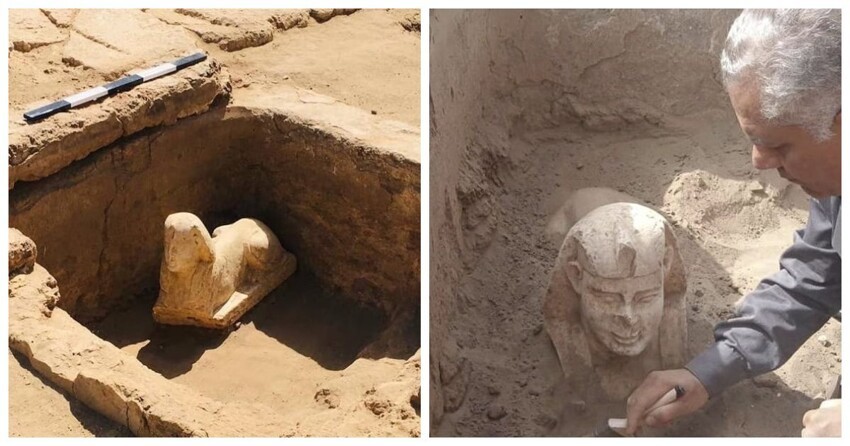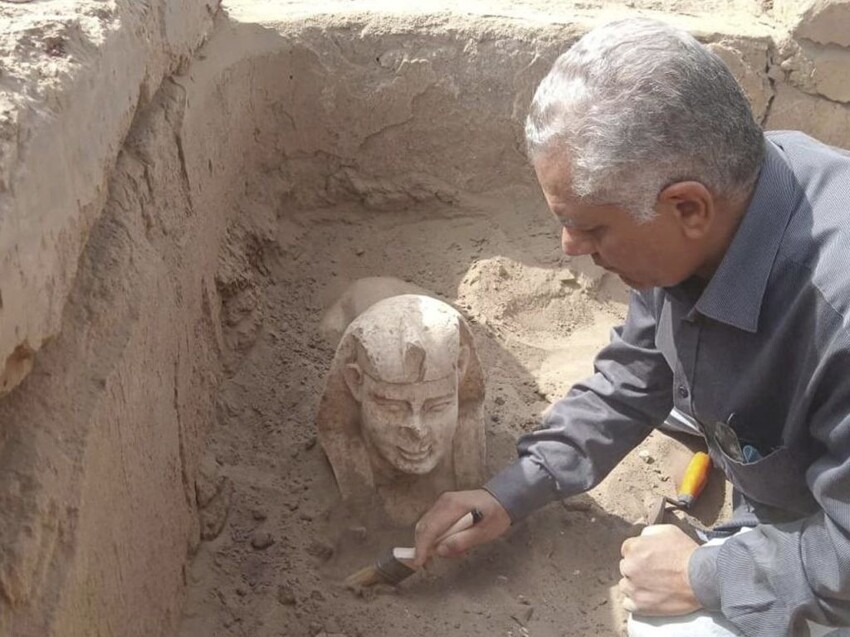In Egypt, they unearthed a hut of the Roman era and a sphinx with the face of a Roman emperor (4 photos)
Egyptian Archaeological Mission from Ain Shams University excavations discovered a statue of a smiling sphinx inside limestone hut of the Roman era. Artifacts were found in the temple Dendera in the province of Qena, 450 km from the capital Cairo. According to experts, the sphinx can represent the Roman emperor Claudius. 
Emperor Claudius is known for the fact that during his reign Between 41 and 54 AD, the Northern Empire was added to the Roman Empire. Africa.
Archaeological mission led by Dr. Mamdouh El Damati, former Minister of Antiquities and Professor of Archeology Cairo University of Ain Shams, worked east of the temple of Dendera in southern province of Qena.
Inside a two-story hut, a pool of red brick and mortar. Limestone Sphinx Statue was inside it. 
The head of the sphinx is crowned with Nemes - the royal headdress, depicting a cobra worn by the ancient Egyptian pharaohs. Cobra sculpted over the eyebrow of the sphinx, as was customary for royal statues.
The statue is much smaller than the famous Sphinx in the Giza pyramid complex, which is 20 meters high.
Statue really beautiful, and the royal features are conveyed quite accurately, - says El Damati. — The Sphinx smiles, there are even dimples on her cheeks. There are traces of yellow and red paint on the face. 
Under the sphinx, a Roman stele was found with a text written in two forms: hieroglyphs and demotic writing. 
Archaeologists plan to continue their work in Dendera. By According to experts, a small temple dedicated to Isis was built Roman emperor Nero, predecessor of Claudius. This temple possibly connected by an underground path to another temple on the east side complex dedicated to the ancient Egyptian god Horus.





















